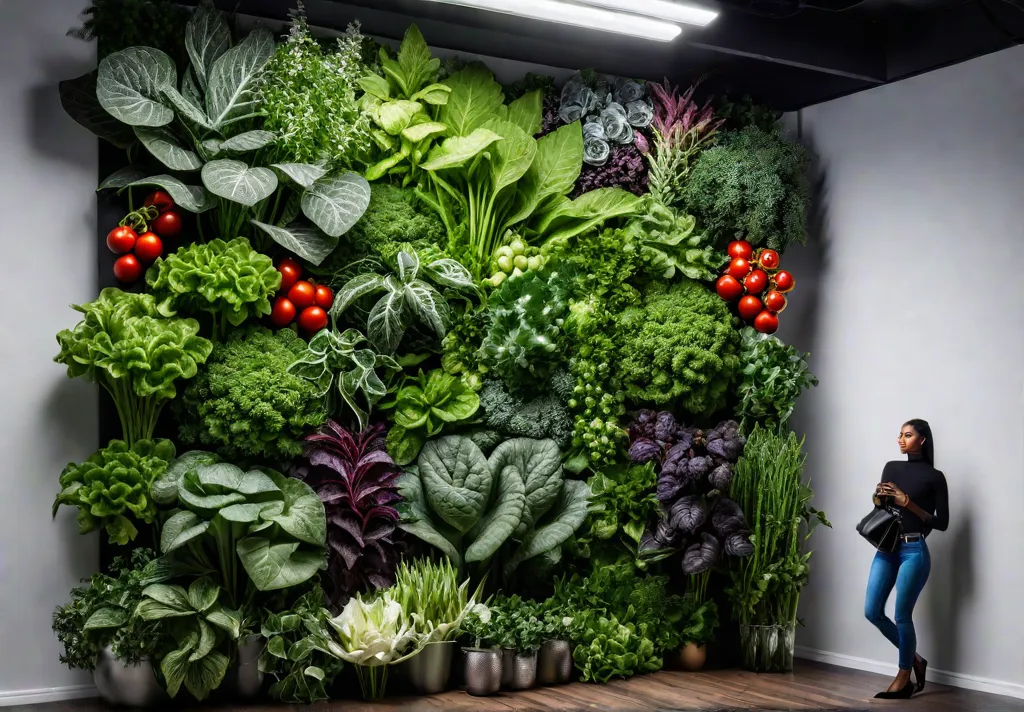Have you ever dreamed of transforming your backyard into a lush, productive vegetable oasis? Well, you’re in luck! This article will explore 12 creative and inspiring vegetable garden ideas that will have you itching to get your hands dirty. Whether you’re a seasoned green thumb or a beginner gardener, these solutions will help you cultivate a thriving outdoor space that’s both beautiful and bountiful.
Imagine stepping outside your door and being greeted by a vibrant tapestry of colors, textures, and flavors. From innovative vertical gardens to whimsical themed designs, the possibilities are endless. So, get ready to unleash your inner gardener, and let’s dive into these 12 incredible vegetable garden ideas!

Vertical Vegetable Gardens
Vertical gardening is one of the most space-saving and eye-catching approaches to growing vegetables. Utilizing vertical space, even in the smallest outdoor spaces, can significantly increase your growing area. Vertical gardens come in all shapes and sizes, from tiered planter boxes to living walls.
These innovative systems allow you to grow a variety of edibles, from cascading vines of cherry tomatoes to fragrant herbs. Plus, many vertical gardens are modular, meaning you can easily expand them as your garden grows. Studies show that vertical gardens can increase your growing space by up to 300% compared to traditional horizontal layouts.
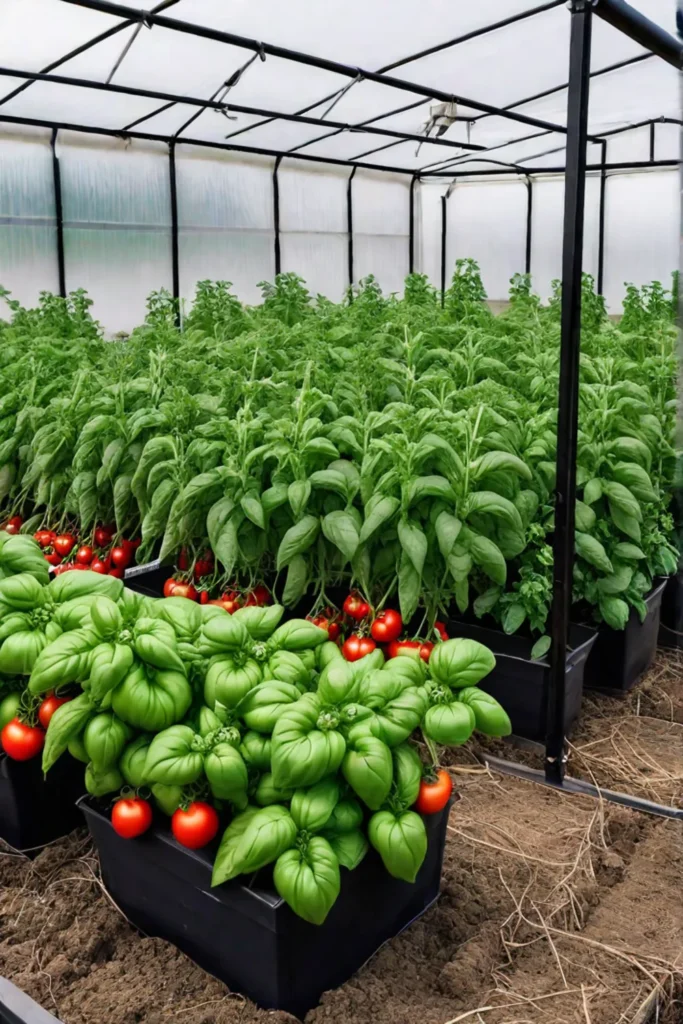
So, consider incorporating a vertical garden, whether working with a tiny balcony or a compact backyard. You might be surprised by how much you can grow in a relatively small footprint.
Raised Bed Vegetable Gardens
Another popular and practical option for vegetable gardening is raised beds. These elevated planting areas offer numerous benefits, including improved soil quality, drainage, and accessibility. Raised beds, from simple wooden frames to tiered, stone-lined designs, can be customized to suit your needs and aesthetic preferences.
One key advantage of raised beds is that they can extend your growing season. By warming the soil earlier in spring and retaining heat longer in fall, you can get a jump-start on planting and enjoy a more bountiful harvest. The elevated design makes weeding and harvesting a breeze, as the soil is more accessible and less compacted.
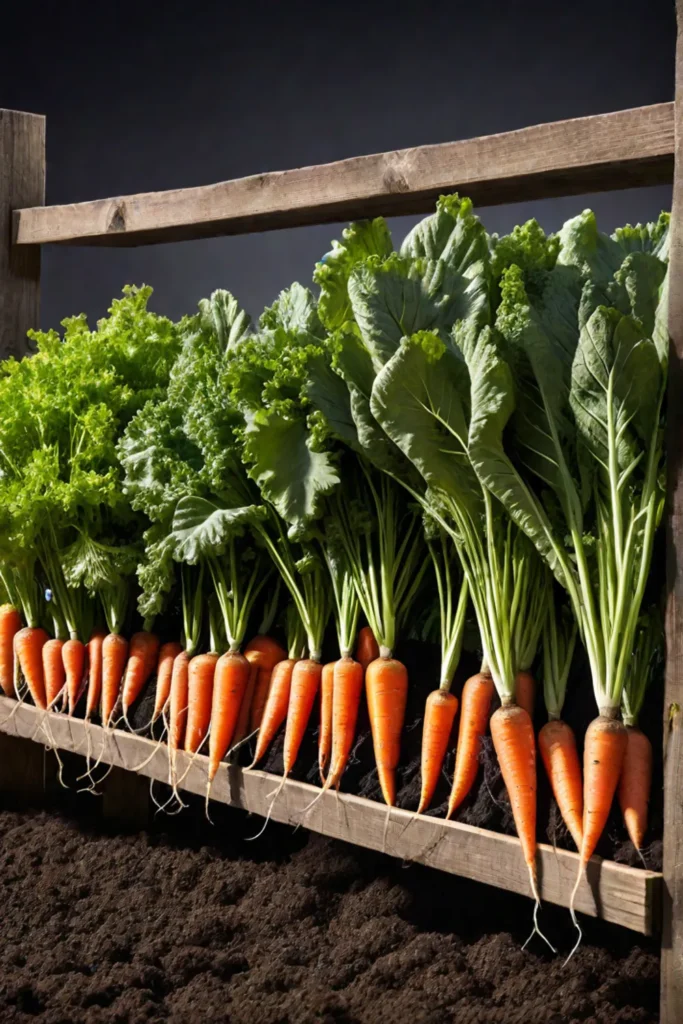
Whether you opt for a single raised bed or a series of tiered planters, this versatile gardening approach can help create a thriving and visually appealing vegetable oasis.
Container Vegetable Gardening
Container gardening is a fantastic solution for those with limited outdoor space. This flexible option allows you to grow various vegetables, herbs, and fruits in pots, planters, and repurposed containers. From classic terracotta pots to self-watering systems, the possibilities are endless.
One of the great things about container gardens is that they can be easily moved to optimize sun exposure throughout the day. This means you can position your plants to receive the perfect amount of sunlight, ensuring they thrive. Plus, many vegetables, such as tomatoes, peppers, and leafy greens, can flourish in containers with adequate soil, water, and care.
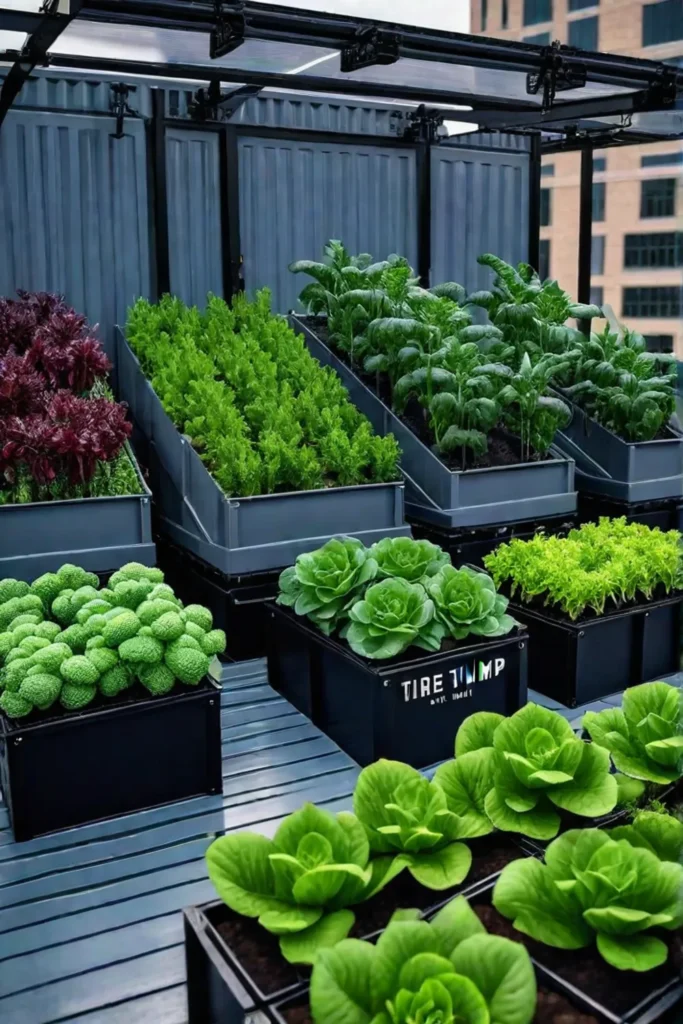
So, if you have a small patio, balcony, or even a sunny windowsill, don’t let that stop you from growing your own fresh produce. Container gardening is a versatile and space-saving solution that can bring the joy of homegrown veggies to any outdoor (or indoor) space.
Edible Landscaping
Blending aesthetics and functionality, edible landscaping is a creative way to incorporate food-producing plants into your outdoor space. You can create a visually stunning and productive garden feast for the senses by strategically placing vegetables, herbs, and even edible flowers.
Edible landscaping can take many forms, from ornamental vegetable beds to living walls and edible hedgerows. The key is to choose plants that not only look beautiful but also provide a bountiful harvest. For example, Swiss chard, with its vibrant stems and leaves, can make a stunning border, while nasturtiums add pops of color and a peppery flavor to salads.
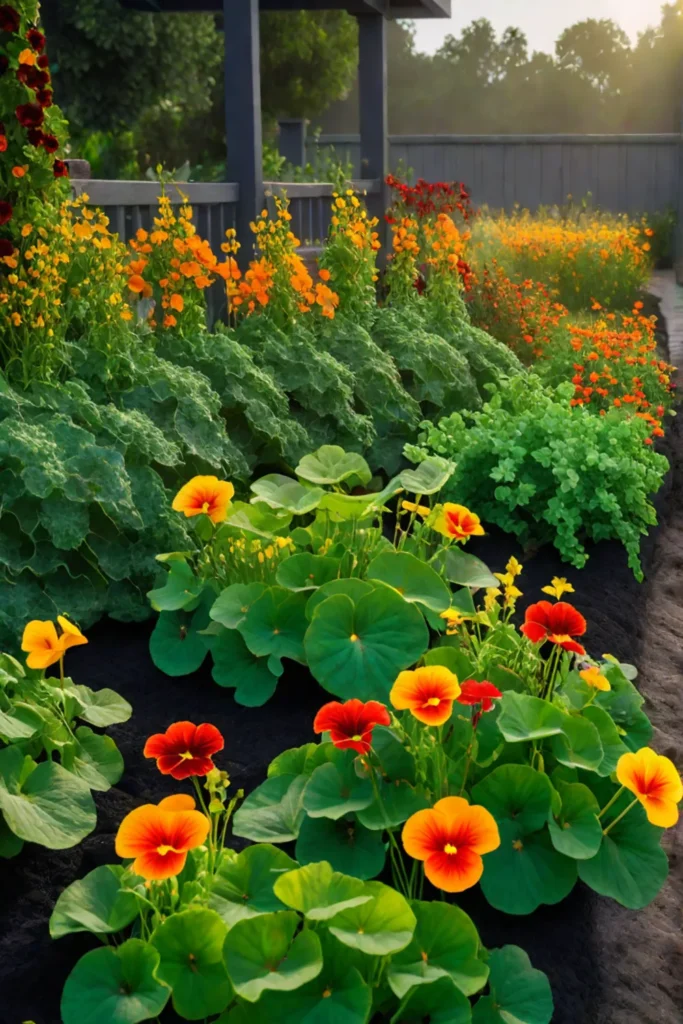
Beyond the visual appeal, edible landscaping can also attract beneficial insects like pollinators, creating a thriving ecosystem in your garden. So, consider weaving edible plants into your existing landscape or starting a dedicated edible garden that’s as pleasing to the eye as it is to the palate.
Companion Planting
Companion planting is a sustainable and effective way to enhance the productivity and health of your vegetable garden. Placing different plants nearby can create a symbiotic relationship that benefits your crops and the ecosystem.
For instance, did you know planting marigolds or nasturtiums around your vegetable beds can help deter pests? Or do dodo basil and tomatoes improve each other’s flavor when grown together? These are just a few examples of the many complementary plant combinations you can explore.
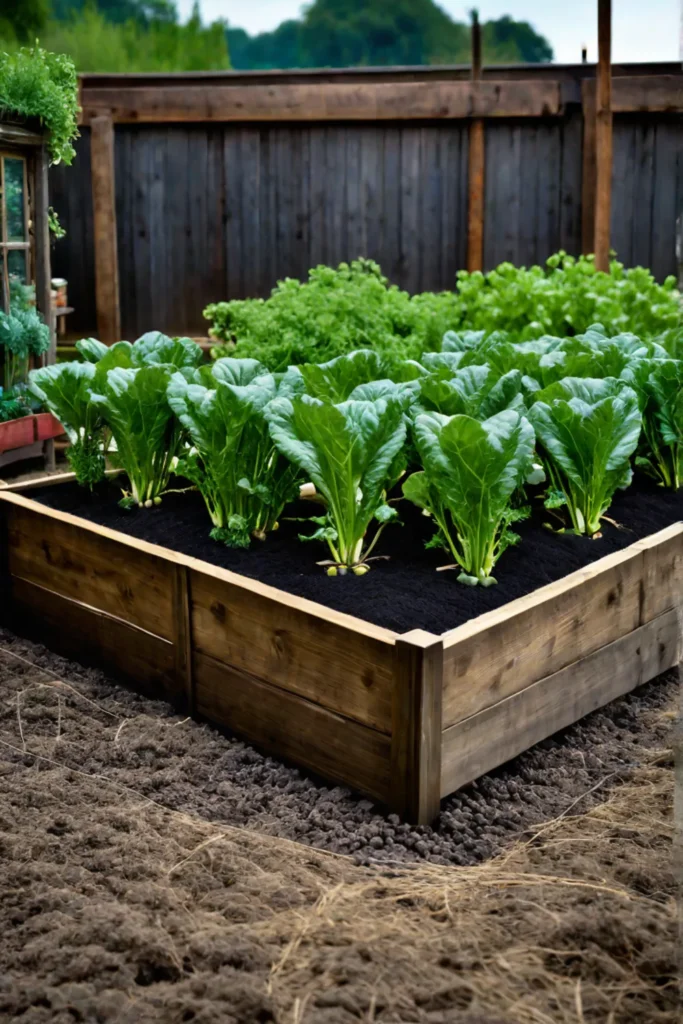
Companion planting is all about understanding different plants’ unique needs and characteristics and using that knowledge to your advantage. Creating a diverse, polyculture garden can reduce the need for harmful pesticides, attract beneficial insects, and enjoy a more bountiful harvest.
Themed Vegetable Gardens
Consider creating a themed design if you want to add a personal touch to your vegetable garden. From Mediterranean-inspired gardens to rainbow-hued beds, the possibilities are endless. Themed gardens allow you to express your unique style and interests while cultivating a productive and visually stunning outdoor space.
For example, a Mediterranean-inspired garden might feature warm-toned vegetables like tomatoes, peppers, eggplants and fragrant herbs like rosemary and lavender. Or, a rainbow vegetable garden could showcase a vibrant array of carrots, lettuce, and edible flowers in a carefully planned layout.
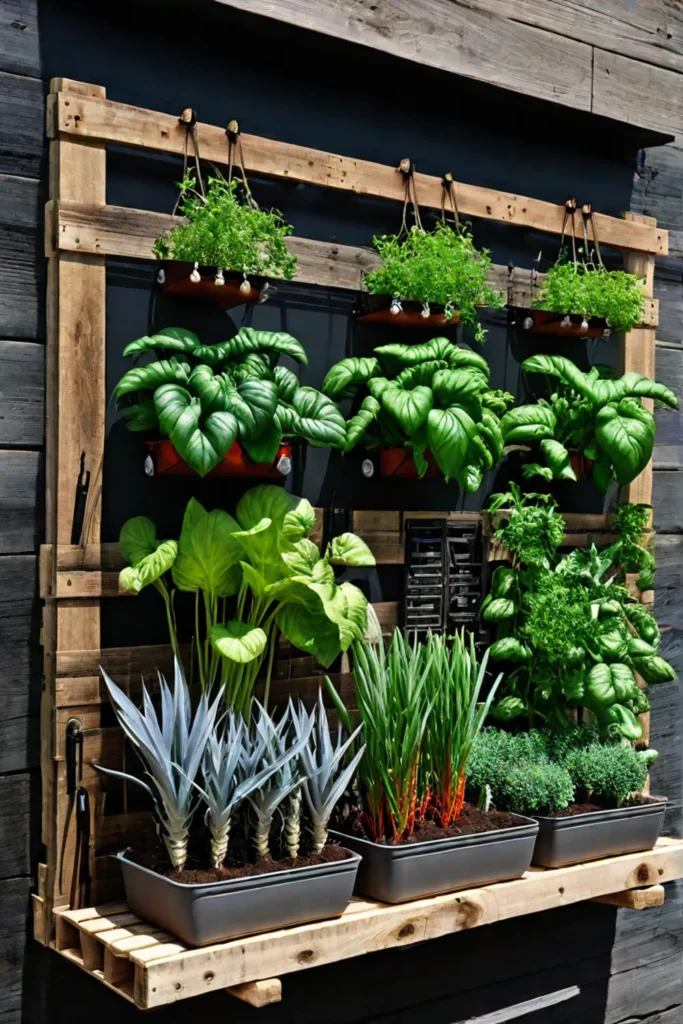
The key to designing a successful themed garden is to choose plants that complement each other aesthetically and have similar growing requirements. With some creativity and planning, you can transform your vegetable garden into a true reflection of your style and passions.
Innovative Garden Structures
Unique garden structures can add a touch of whimsy and functionality to your vegetable garden. From trellises and arches to pergolas and arbors, these elements can serve various purposes, such as supporting climbing plants, creating shaded areas, and defining garden spaces.
For instance, a teepee-style trellis from bamboo or other natural materials can support vining crops like beans and peas. Or, a living willow arch can add a natural, organic feel to your garden while also supporting climbing vegetables.
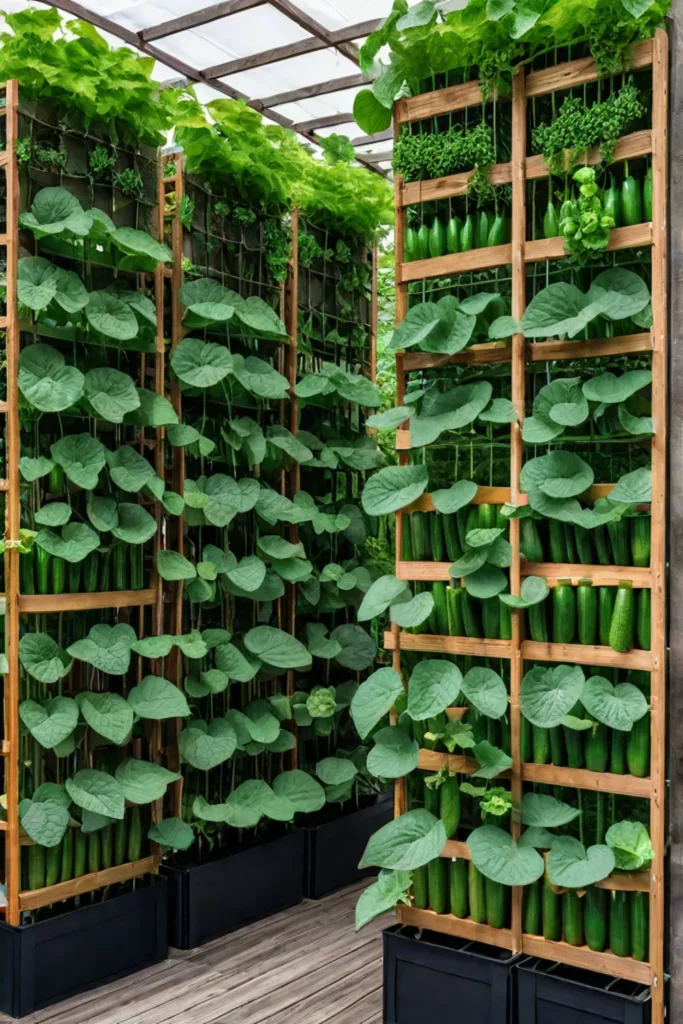
By incorporating innovative garden structures, you can enhance the visual appeal of your outdoor space and optimize the growing conditions for your plants. So, don’t be afraid to get creative with the structures you incorporate into your vegetable garden design.
Edible Flower Gardens
Elevate your vegetable garden to new heights by incorporating edible flowers. These colorful and flavorful blooms can add a touch of beauty, versatility, and culinary delight to your outdoor space.
Many common flowers, such as nasturtiums, marigolds, and calendula, are visually striking and edible. You can use these flowers to add a pop of color to salads, garnish your favorite dishes, or even brew them into tea.
Consider pairing these blooms with your favorite vegetables and herbs when designing an edible flower garden. The result will be a feast for the senses—a garden that delights the eye and the palate.

Remember to research the specific edible flower varieties that thrive in your climate and growing conditions. With some planning and care, you can create a vibrant and versatile edible flower garden that will elevate your culinary creations and bring joy to your outdoor space.
Sustainable Vegetable Gardening Practices
As gardeners, we are responsible for cultivating our outdoor spaces in a sustainable and eco-friendly manner. Fortunately, you can implement numerous techniques and strategies to create a more resource-efficient and environmentally-conscious vegetable garden.
One key aspect of sustainable gardening is using organic practices, such as composting, mulching, and natural pest control methods. These methods reduce waste, conserve resources, and support a healthy, thriving ecosystem in your garden.
Additionally, you can incorporate water-saving irrigation systems, like drip irrigation, to minimize water usage. Planting pollinator-friendly flowers and incorporating cover crops can also help attract beneficial insects and improve soil health.
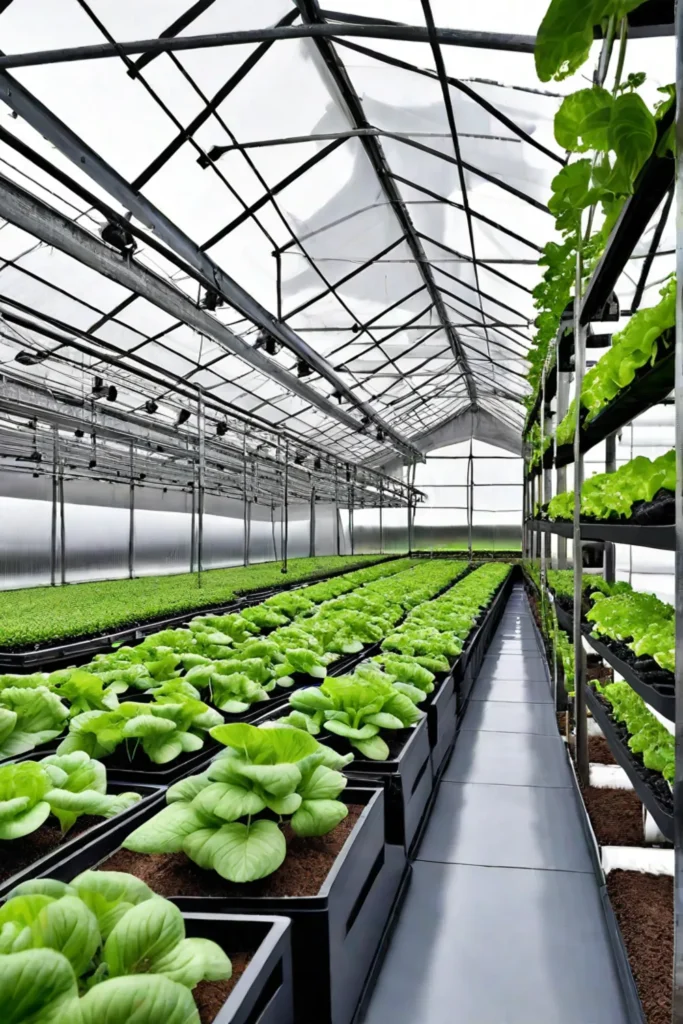
By adopting sustainable gardening practices, you’ll enjoy a bountiful harvest and contribute to a healthier, more resilient garden ecosystem. It’s a win-win for both you and the environment.
Unique Vegetable Varieties
Stepping outside the realm of traditional vegetable varieties can add a delightful touch of novelty and diversity to your garden. Heirloom and specialty vegetables often boast unique flavors, colors, and growing characteristics that can elevate your culinary experiences and garden design.
Imagine vibrant purple carrots, striped or multicolored tomatoes, or miniature eggplants. These uncommon varieties can pique your interest and provide a wealth of culinary possibilities. Specialty greens, such as red-leaf lettuce or microgreens, can add elegance and complexity to your salads and dishes.
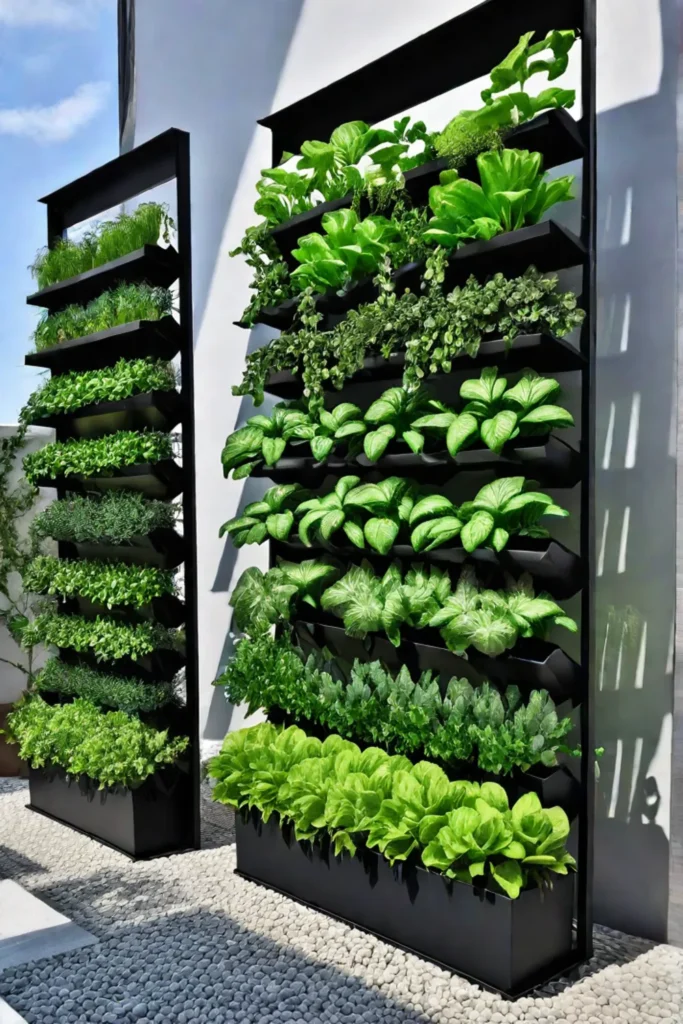
Exploring and incorporating these unique vegetable varieties can be fun and rewarding to add visual interest and diverse flavors to your garden. Just be sure to research these specialty crops’ specific growing requirements and care needs to ensure a successful harvest.
Conclusion
The 12 creative vegetable garden ideas presented in this article offer a wealth of inspiration and practical solutions for gardeners of all skill levels. From innovative vertical systems and customizable raised beds to themed gardens and the integration of technology, these ideas demonstrate the boundless possibilities for transforming a small outdoor space into a thriving, productive, and visually stunning vegetable oasis.
By exploring these creative approaches, you can unlock new ways to cultivate your green thumb, maximize your growing potential, and enjoy the many benefits of homegrown produce. So, what are you waiting for? Start planning your dream vegetable garden and get ready to reap the rewards of your hard work and creativity.
